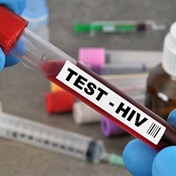A new study finds that one in two patients with HIV/Aids suffers from headaches.
"These are not your typical mild, run-of-the mill headaches," Dr Todd A. Smitherman, who worked on the study, told Reuters Health.
"In fact, 27.5% of all patients in this study met criteria for chronic migraine, a rare headache condition in which a person has migraine with or without other headaches for 15 or more days per month," said Dr Smitherman, of the Department of Psychology, University of Mississippi in Oxford. His study was published online November 11 in the journal Headache.
Headache is one of the most common complaints in patients with HIV/Aids, yet limited and conflicting data exist on their prevalence, characteristics and associations in the current era of highly active antiretroviral therapy (HAART).
Migraine headaches a high risk
The new analysis is the first study since the widespread proliferation of HAART to demonstrate that having HIV/Aids portends a very high risk of headache, particularly migraine, Dr Smitherman said.
The cross-sectional study involved 200 HIV/Aids patients visiting an internal medicine clinic or Aids outreach clinic in Montgomery, Alabama. Half the participants were women and three-quarters were African American. The mean age was 43 years.
Researchers administered the Structured Diagnostic Interview for Headache-Revised, Brief Version (SDIH-R), and they also had participants’ complete two measures of headache-related disability. From medical records they obtained information on medications, recent CD4 cell counts, date of HIV diagnosis, possible causes of secondary headache, and other relevant data.
Dr Smitherman and colleagues discovered that more than half of the participants (n = 107, 53.5%) reported headache symptoms and most of the symptoms were consistent with primary headache disorders.
Headaches frequent and severe
Notably, they say, only 39% had been diagnosed with a headache disorder in the past.
Among the 103 patients who met criteria for primary headache disorder, 88 (85.4%) met criteria for migraine, which in most cases fulfilled International Classification of Headache Disorders (ICHD)-II criteria for chronic migraine, although with some atypical features such as bilateral location and pressing/tightening quality, according to the report.
Recent estimates indicate that only 2% of the population suffers from chronic migraine, meaning that HIV/Aids patients are more than 13 times more likely to experience chronic migraine than are individuals without HIV/Aids, Dr Smitherman told Reuters Health.
Fifteen patients (15%) met criteria for episodic or chronic tension-type headache.
In general, patients' headaches were frequent and severe, aggravated by activity, and accompanied by photophobia and phonophobia, the investigators report.
Disabling headaches in advanced HIV
Patients with more advanced HIV disease (determined by CD4 cell counts) were more likely to have headaches, more frequent, severe and disabling headaches and more migrainous presentations.
Importantly, say the researchers, these differences were not due to differences in duration of HIV infection or number of prescribed antiviral agents. Therefore, the progression of HIV disease is clearly of central importance in predicting headache symptoms, they say.
Our data suggest that physicians should regularly monitor CD4 levels among this population, be attentive to the possibility of significant headache symptoms among patients with advanced disease, and emphasise adherence to medication regimens among their patients, Dr Smitherman advised.
Better headaches in controlled HIV
Although the study did not investigate HAART compliance per se, the data are consistent with the notion that those HIV patients whose illness is well-controlled have much better HIV and headache outcomes than do their sicker counterparts, the authors note.
A limitation of the study is the small number of Hispanic participants (3.5%), a group disproportionately affected by HIV disease.
Another limitation is the absence of neuroimaging or lumbar punctures for definitive exclusion of secondary causes. We cannot entirely exclude the possibility that some patients with primary headache semiologies might have had unidentified causes from HIV-related pathophysiology, the investigators say.
(Reuters Health, December 2011)
Read more:




 Publications
Publications
 Partners
Partners














